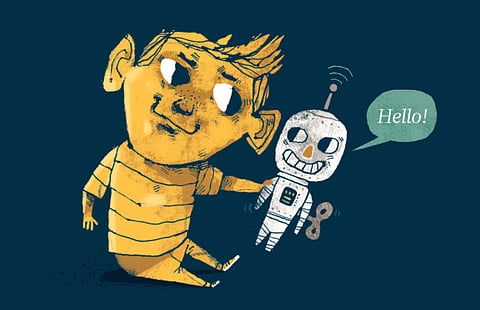Focus: Smart dolls
Is it okay for smart toys to records children’s playtime?

Safety
From Mr Shalzar M.
Production executive based in Dubai
Evolving
Toys are almost human
From dancing army of dolls in The Nutcracker ballet to the growing nose that Pinocchio had, the tradition of toys coming to life was once reserved for the realm of fantasy, bestowed by fairies and magic. But today, toys are almost human and this is increasingly accomplished with artificial intelligence technology that is intended for use by real children. When Jiminy Cricket saw Pinocchio come to life, he exclaimed: “Whew! What they can’t do these days”! The declaration seems more suitable to toys being produced seventy-five years later as artificial intelligence looks for a new home in every house with a child. In the last year, a number of toys that can have conversations with humans have moved from the fantasy realm to reality. A robotic toy holds conversations about the weather in any language of your preference while being able to analyse linguistic patterns and picking up on your preferences and interests. Humanoid robots aim to be your children’s best friends and are programmed to teach them emotional intelligence. Many smart toys these days are made to answer thousands of questions and keeps pace with a child’s learning. An application patented by Google published earlier this year, features a teddy bear and bunny rabbit who tilt their heads and focus their gaze towards humans that they are interacting. They are even equipped with speakers, microphones, motors, and cameras. A Barbie with a WiFi connection talks about fashion and remembers a child’s career aspirations so she can encourage them in future conversation.
Educational
Children have stopped exploring
These days parents feel that toys can be ways of helping teach their children and tickle the learning senses. Smart toys are designed to help children develop certain skills. They use technology to teach expand vocabulary, teach colours, shapes and numbers. In a technologically advanced world, parents increasingly feel the pressure to boost their baby’s brain power. But child development experts warn that many claims made by makers of so-called smart toys are little more than smart marketing. Even basic toys now have sound chips and lights and some sort of element to make them seem as though they’re a highly technological educational toys. Even basic stacker rings have even been “upgraded” with flashing lights, music and a voice that applauds when rings are placed in the right order. While such toys certainly seem advanced, they seem to be taking away from childrens’ basic tendency to explore, this is like force-feeding a system into them. Getting your paper-plane to fly far is no more a thrill. The urge to create and think seems lost, the only thing happening is mindless absorbing. These toys may help parents understand children better, through the data that is being gathered. But they also let parents depend on these toys instead of trying themselves. This may also lead to trust issues, where a child thinks something is a secret, whereas, the toy has been giving it away the whole time. Childhood best-friends used to keep your secrets, these machines can’t.
From Ms. Sugandhi Sawhney
Student based in Chicago, Illinois
Sign up for the Daily Briefing
Get the latest news and updates straight to your inbox



